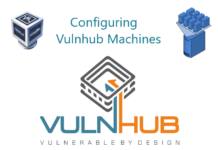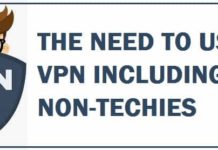Big data is everywhere these days. Companies are collecting more data than ever, and security risks have multiplied. Big data is essential to creating a competitive advantage in the markets, but it can also cripple your business if you ignore common vulnerabilities.
These vulnerabilities arise from how big data is stored and transmitted throughout your organization. Here are 4 common big data vulnerabilities and how you can mitigate the risks they create.
Contents
Get the basics right
Getting the basics of big data storage and transmission goes a long way toward mitigating any risks. There are 3 functions you must review. First, examine how data enters your system. Are your data sources uncorrupted, and are you using the right tools to being data in?
Next, how are you storing those datasets? Data warehouse vulnerabilities can cripple your systems, so make sure you’re using the right tools. For instance, Redshift is ideal for enterprise-scale BI integration, but Clickhouse offers ultra-low latency requests. Compare Clickhouse vs Redshift and other options in this category to choose the one that works best for you.
Lastly, check where you’re sending your data. Which entities are reviewing it, and can they edit or change data parameters? Often, configuration errors in system integrations can create data vulnerabilities. For instance, a configuration error between two systems might give a malicious actor an entry point to your data transmissions and corrupt them.
Examining these three fundamentals of data handling and storage will reveal potential weaknesses. This exercise also forces you to check your system setups and configurations for weaknesses. The result is a holistic view of your technical infrastructure that reveals weaknesses immediately.
Data access
Who is accessing your data, and are your permissions in line with organizational needs? For example, most senior-level managers automatically receive edit access to data by default. Unfortunately, many of these managers are far removed from daily data handling tasks, leading to a dormant user ID.
Malicious actors routinely leverage these IDs to compromise your systems. Thus, restrict and review user access routinely. Remove dormant IDs and review the use cases connected to an ID. For instance, offering edit access to someone intimately connected with data handling and analysis tasks makes sense. Conferring this degree of access to someone solely based on seniority is a bad decision.
Identity access management tools will help you simplify this task, especially if your organization is large. IDM tools will also reveal third party service providers accessing your data. For example, cloud service providers have access to your data, and you must monitor their activities.
Is someone mining your data without your permission and using it for analytics? Data is everything in business, so make sure you have optimal visibility over data access and handling. This isn’t to say you must avoid using third party providers. Instead, you must establish proper data monitoring processes and tools that give you full visibility.
Safeguard your metadata
Many companies focus their cybersecurity efforts on data while ignoring their metadata. A metadata breach can cost you much more since it contains information about all of your systems and data flow information. Metadata reveals where your data originated, which systems it interacted with, which users access data, and where your data is headed.
For starters, monitor for metadata changes since this is a red flag in most cases. Metadata is usually not encrypted for easier admin access. So make sure you monitor access and changes. The best solution is to install proper authentication and security processes.
Restrict access to sensitive systems as much as possible, and you’ll automatically reduce any potential exposure of metadata. Consider encrypting your metadata, but review business processes to ensure encryption won’t create additional roadblocks. For instance, your ETL processes might struggle to deal with encrypted metadata, creating larger issues.
So review how encryption impacts all your processes and proceed from there.
Review data querying tool security
NoSQL tool usage is rising as BI and data analytics become democratized. While data democratization is excellent from a business perspective, it creates issues on the security side. NoSQL tools are relatively new and experience constant updates.
An update might potentially introduce configuration errors into your systems, leading to a vulnerability in your security stance. Enforce admin authentication at every step to ensure you’re covering all security bases. Review the basics of data security after every update.
These basics include data access authorization, authentication, encryption, and auditing. Often, updates clash with application infrastructure creating additional security issues. Review all of them thoroughly to ensure your systems are always secure.
Data security is paramount
Business needs robust data handling and security processes. Secure your data at all costs and install the tools you need to get the job done.
Remember that the best tools need equally robust processes backing them up. Review who accesses your data, how they do it, and where they send data.






